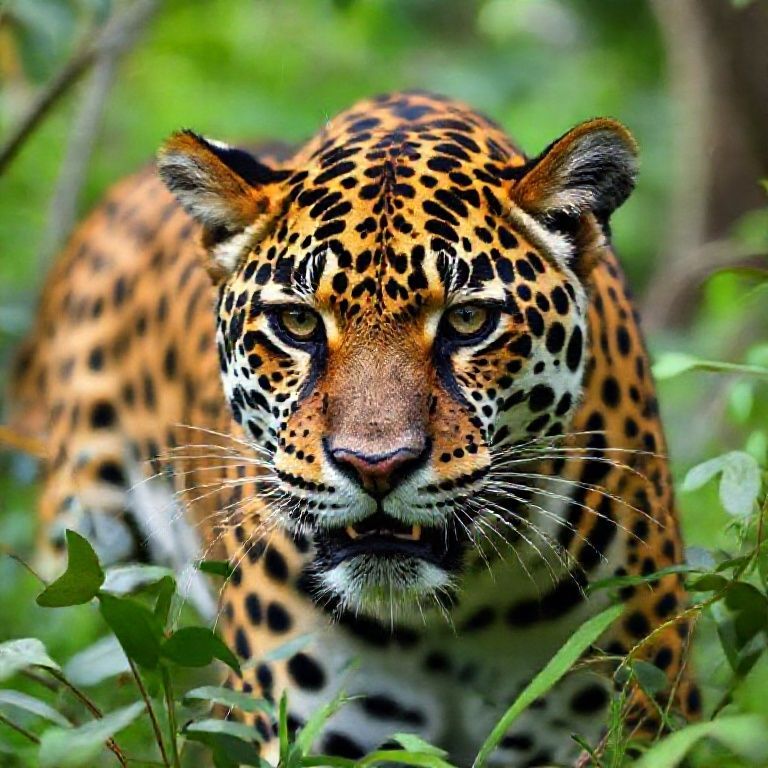The jaguar, a majestic symbol of power and grace, roams the diverse landscapes of Mexico. But these magnificent creatures are facing increasing threats, pushing them closer to the brink of extinction. Habitat loss, poaching, and conflict with humans are all contributing to a decline in jaguar populations. Conservation efforts are crucial, requiring collaborative action from local communities, government agencies, and international organizations to ensure these iconic cats continue to thrive in their natural habitat. This is the story of the fight to protect Mexico’s wild jaguars.
The Jaguar’s Significance in Mexican Culture and Ecology
Jaguars hold a significant place in Mexican culture and history. Revered by ancient civilizations like the Maya and Aztec, they were often depicted in art, mythology, and religious ceremonies, symbolizing strength, courage, and power. Beyond their cultural importance, jaguars play a vital role in maintaining the health and balance of ecosystems. As apex predators, they help regulate prey populations, preventing overgrazing and maintaining biodiversity. Their presence indicates a healthy ecosystem, benefiting countless other species.
Threats to Jaguar Populations
Despite their importance, jaguar populations in Mexico have been declining due to several factors:
- Habitat Loss: Deforestation for agriculture, urbanization, and infrastructure development is shrinking the jaguar’s natural habitat, fragmenting populations and reducing their access to food and mates.
- Poaching: Jaguars are hunted for their pelts, teeth, and claws, which are sold on the black market. They are also sometimes killed by ranchers who perceive them as a threat to livestock.
- Human-Wildlife Conflict: As jaguars’ habitat shrinks, they are increasingly likely to come into contact with humans, leading to conflict when they prey on livestock. This often results in retaliatory killings of jaguars.
- Climate Change: Changing weather patterns and rising temperatures can alter jaguar habitats, making it harder for them to find food and water.
Conservation Efforts in Action
Fortunately, dedicated individuals and organizations are working tirelessly to protect Mexico’s wild jaguars. These efforts include:
Protecting and Restoring Habitats
Establishing protected areas and wildlife corridors is crucial for conserving jaguar habitats. Reforestation projects and sustainable land management practices can help restore degraded habitats and provide jaguars with safe passage between fragmented populations. Organizations like the World Wildlife Fund (WWF) and Pronatura México are actively involved in these efforts.
Combating Poaching and Illegal Trade
Strengthening law enforcement and increasing penalties for poaching can deter illegal hunting. Raising awareness among local communities about the importance of jaguars and the consequences of poaching is also essential. Anti-poaching patrols and community-based monitoring programs can help protect jaguars from illegal hunting.
Mitigating Human-Wildlife Conflict
Implementing strategies to reduce conflict between jaguars and humans is vital for jaguar conservation. This can include providing farmers with financial assistance to implement livestock protection measures, such as building jaguar-proof fences and using guard dogs. Educating communities about jaguar behavior and promoting coexistence can also help reduce conflict.
Community Involvement and Ecotourism
Engaging local communities in conservation efforts is crucial for long-term success. Providing economic incentives for conservation, such as through ecotourism, can help communities see the value of protecting jaguars. Ecotourism can generate revenue for local communities while also promoting awareness about jaguar conservation.
The Future of Mexico’s Jaguars
The fight to protect Mexico’s wild jaguars is far from over. Continued dedication and collaboration are needed to ensure these magnificent creatures continue to roam the landscapes of Mexico for generations to come. By protecting their habitats, combating poaching, mitigating human-wildlife conflict, and engaging local communities, we can create a future where jaguars and humans can coexist.
Conclusion
The survival of Mexico’s wild jaguars hinges on the collective efforts of conservationists, communities, and governments. By understanding their ecological importance and addressing the threats they face, we can secure a future where these magnificent creatures continue to thrive. The fight to protect the jaguar is a fight for Mexico’s biodiversity and cultural heritage, a fight worth winning.
If you found this story inspiring, share it with your friends and family to raise awareness about jaguar conservation in Mexico! Explore our other articles on Life in Mexico for more stories about the country’s amazing wildlife and conservation efforts.
IMAGE: A stunning, high-resolution photograph of a wild jaguar in the dense rainforest of the Yucatán Peninsula, Mexico. The jaguar is walking stealthily through the undergrowth, with dappled sunlight filtering through the leaves and highlighting its distinctive rosette patterns. The mood is mysterious and hopeful, with lush green foliage and vibrant colors. The style should be realistic and capture the beauty and power of this endangered animal.


